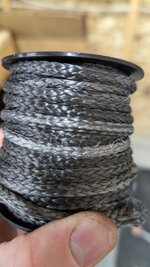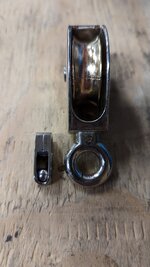I setup a 2:1 and 3:1 in a block and tackle setup using good quality 550 paracord. I was pulling down to lift a load of 50lbs (rove to disadvantage) just like I would to hang quarters.
Using my bow scale the load (dumb bells) measured 48-50lbs without mechanical advantage. In a 3:1 setup I had to get the rope tension to ~43-45lbs before I could lift the load. Once suspended the rope tension was almost exactly 16lbs as you'd expect. To lower the load the rope tension gets to nearly 0lbs before it starts to lower.
In a single pulley lift (no mech advantage) the rope tension hit a staggering ~70lbs before I could get the 50lb load to lift. This is with nearly 180 degree wrap.
I also tested 75lb load lift in a 3:1 setup and felt like I could barely get it off the ground even with a t-handle. Rope tension hit ~66lbs before it came off the ground.
My findings align with this website which shows throwing a line over a 0.5" diameter carabiner with no sheave provide ~54% efficiency. I think due to the small size of the Pynch Pulley ball bearing you end up with a similar result.
Pulley diameter and rope stretch do affect your hauling efficiency. It’s more relevant to mountain rescue teams and big wall climbers than to alpine climbers.

www.alpinesavvy.com







